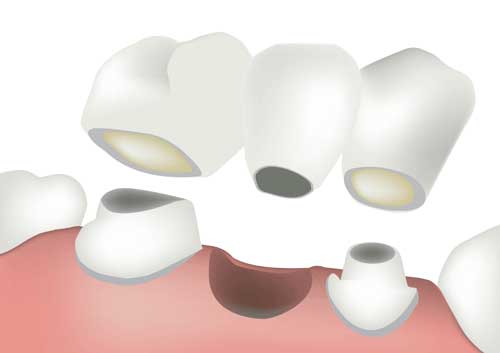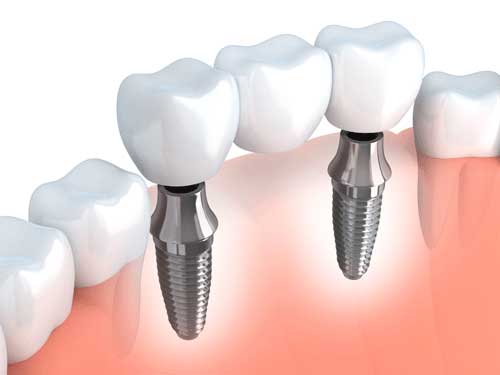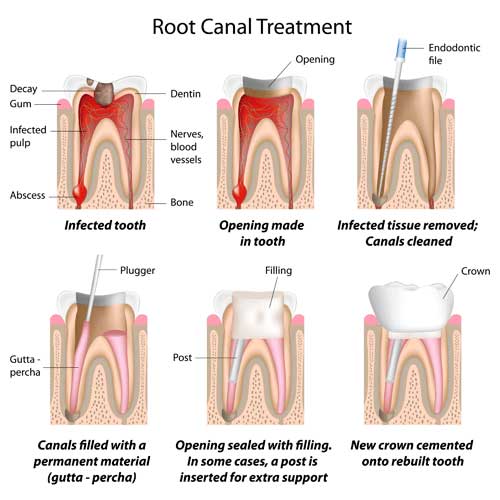
There is what is known as a “Cantilever Bridge” which is held in the mouth by one or more crowns on only one side of the space where a tooth is missing.
A “Maryland Bonded Bridge” or a resin-bonded or acid-etched bridge, is made of a metal framework which has what are called wings on either side.
These wings are then bonded to the back of your healthy and strong teeth for a solid fit. The false teeth are also bonded to the framework.
For the most part however the “Traditional Bridge” provides the best support for the longest duration.
A dental bridge, which sometimes is referred to as a fixed removable denture, is a fixed prosthetic device that is made and used when a person needs to replace a missing or badly damaged tooth or teeth. Bridges can be supported in a variety of different ways.
1. Using a person’s natural teeth
2. By having dental implants done
3. A combination of both implants & natural teeth
A standard bridge is made by creating a crown for the tooth or teeth on either side of the empty space then placing a false or fake tooth or teeth between the crowns. The crowns, which can sometimes also be called caps, can be supported either by natural teeth or by implants or a combination of both. The bridge and the false teeth are made to look and feel like a real tooth.


Step 1. X-ray – The first step to seeing what is happening inside of the tooth the dentist will get the area completely x-rayed using our state of the art digital x-ray equipment.
Step 2. Anesthesia – The dentist will apply a local anesthesia to the affected tooth and the surrounding area. Remember a root canal is no more painful than a standard filling and certainly nothing to be afraid of.
Step 3. Pulpectomy – The dentist will then treat the affected area and remove all of the decayed tooth pulp.
Step 4. Filling – The dentist will then fill the roots that have been opened and seal them.
Step 5. Post – A post, filling and crown will be placed at a subsequent appointment.
A root canal is a procedure the dentist does to a decayed or damaged tooth or teeth in order to save the tooth and avoid an extraction.The dentist will start by removing the damaged or decayed areas of the tooth, then he will clean and disinfect the area and then fill and seal it.
There are several causes that can affect the pulp of the tooth creating the need for a root canal treatment.
These include..
• Cracked Tooth
• Deep Cavities
• Trauma
• Repeated treatment to the area

Contact Info
Smile Brite Dental
Naushil Desai, DMD
600 S. Euclid St,
Anaheim, CA 92802
Office Hours
Monday: 10:00 am to 7:30 pm
Tuesday: 10:00 am to 7:30 pm
Wednesday: 10:00 am to 7:30 pm
Thursday: 8:30 am to 4:00 pm
Friday: 8:30 am to 4:00 pm
Saturday: By Appointment
